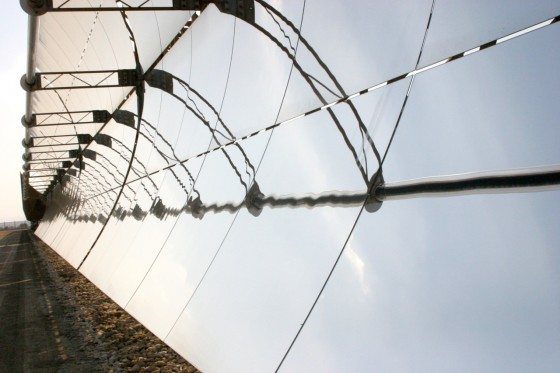Researchers at the University of Arkansas have developed a solar energy storage system that stores the thermal energy (heat) absorbed by solar panels at a lower cost than conventional energy storage methods.
The most common conventional methods for such a system involves storing the heat absorbed by solar thermal power plants in tanks of molten salt or in beds of packed rock or oils. This is, in general, thermal energy storage.
Beds of packed rock are currently the cheapest and most efficient type of thermal energy storage, and they do work, but, as is the case with everything, there is room for improvement.
Beds of packed rock expand and contract as their temperature rises and falls, respectively. This was called “thermal ratcheting,” which stresses the walls of storage tanks because the rocks expand beyond their normal size (the size they were when they were fitted into the tank) — similar to how ice expands and can break glass in your freezer or pipes in winter.
“The most efficient, conventional method of storing energy from solar collectors satisfies the US Department of Energy’s goal for system efficiency,” said Panneer Selvam, professor of civil engineering. “But there are problems associated with this method. Filler material used in the conventional method stresses and degrades the walls of storage tanks. This creates inefficiencies that aren’t calculated and, more importantly, could lead to catastrophic rupture of a tank.”
The New Method
The new method from the University of Arkansas researchers is a structured thermocline system in which there are parallel plates of concrete with steel pipes running through them. The steel pipes transfer heat absorbed by solar panels into the concrete, which stores it until it is needed to boil water and produce steam (which is usually the case), or supply heat to other heat-powered generators such as Stirling engines or thermoelectric modules.
This thermocline concept survived temperatures up to 600 degrees Celsius (1,112 degrees Fahrenheit) and absorbed heat at an efficiency of 93.9%.
It has an impressively low cost of $0.78 per kWh, far less than the U.S Department of Energy’s goal of $15 per kWh.
To give you a better idea of how this compares to batteries: Lead-acid batteries cost upwards of $25 per kWh, lithium-ion batteries cost $50 to $100 per kWh. Lithium-ion batteries can last 4 times longer than lead-acid batteries depending on the type and usage.
So, this should lead to further growth of the solar industry, which thoroughly benefits from reduced energy storage costs. Solar market penetration can be very high when using energy storage.








